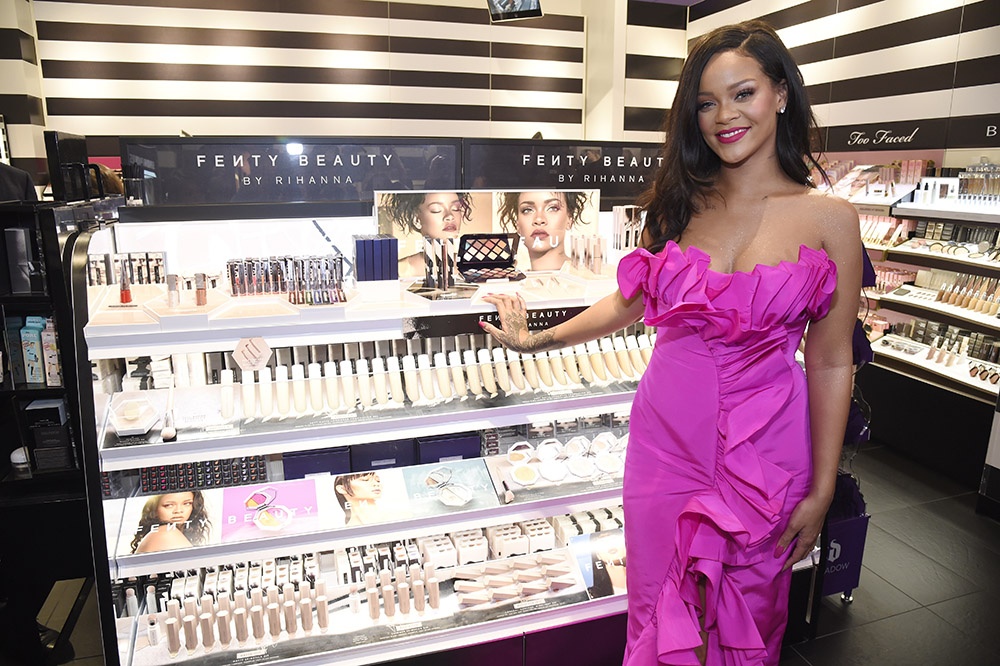The past few years have seen an explosion of celebrity brands, producing everything from tequila to lipstick to luggage. But few of the top celeb-fronted companies are earning high scores for sustainability, if a review of the eco-ratings platform Good on You is to be believed.
Founded in Australia in 2015, Good on You judges fashion and beauty companies across the globe according to three main criteria: people (labor practices), planet (environmental initiatives) and animals (welfare). Performance in each of these areas contributes to an overall rating, ranging from “Great” (a 5/5 rating) to “We avoid” (1/5). More than 6,000 brands have been rated so far, with staffers generally endeavoring to update scores every 12 to 18 months to judge progress (or backsliding, as the case may be).
At a moment when the famous are increasingly shilling their own consumer goods, The Hollywood Reporter scoured the platform for dozens of well-known celebrity brand names. Only 14 had been rated so far — with many ascendant labels, like Selena Gomez’s Rare Beauty, Sara and Erin Foster’s Favorite Daughter, and Lady Gaga’s Haus Labs, not yet on the platform. But of the pool that was, overall scores were pretty poor. The highest-achieving brands — Miranda Kerr’s Kora Organics and Stella McCartney’s eponymous brand — received a “Good” rating (4/5), while the majority notched failing scores (five were “Not good enough,” or 2/5, and seven were “We avoid”).
These results aren’t surprising to Good on You co-founder Sandra Capponi, who says they’re indicative of a larger issue. “The industry generally isn’t where it needs to be in tackling these issues,” she says. “So many of the biggest known brands don’t do that well on the Good on You rating system.” Case in point: While fast fashion shops like SHEIN and Forever 21 unsurprisingly don’t fare well, neither do luxury purveyors like Chanel, Loewe and Versace. Just over 19 percent of brands receive a “good” or “great” rating.
The system puts an emphasis on transparency: Only information that is publicly available goes into the analysis. Sustainability webpages, environmental, social and governance (ESG) reports, published brand policies and even sometimes the various individual products’ component materials can be scrutinized, says Good on You sustainability manager Kate Hobson-Lloyd. Various disclosures and certifications (such as OEKO-TEX) are also taken into consideration.
Lack of transparency pulled down scores for several brands on THR’s list. Kim Kardashian’s shapewear line Skims and Rihanna’s lingerie brand Savage X Fenty, for instance, were dinged for not communicating “sufficient information” about their environmental policies.

Rihanna’s Fenty Beauty, one of 14 celebrity brands evaluated by Good On You, was rated “Not Good Enough.”
Kevin Mazur/Getty Images
And large businesses go through a more rigorous ratings process. While all companies are reviewed for their approaches to chemical management and greenhouse gas emissions, for instance, big brands are scrutinized to see if they have specific goals to eliminate hazardous chemicals and reduce greenhouse gas emissions, and how much progress they have made toward reaching those benchmarks. “We expect a lot more of large brands because they’ve got the budget and the clout to have more of an influence on their supply chains,” explains Hobson-Lloyd.
Major entities have taken notice of the ratings system: Farfetch, Klarna and the company that owns Westfield shopping centers have all used Good on You to evaluate their brand portfolios, while Capponi says actress Emma Watson has primarily worn labels rated 3/5 (“It’s a start”) or above for brand collaborations, public events and on the red carpet since 2018. (Representatives for Watson did not return a request for comment.)
Good on You deliberately sets a high bar. So at this moment when celebrity businesses are booming, what is their advice for these famous entrepreneurs? Hobson-Lloyd points out that several brands on THR’s list have a high price point, so those labels could be more transparent about whether they are attempting to make sure workers are paid a living wage. The Good on You platform asserts that high-priced brands like the Olsen twins’ The Row and Gwyneth Paltrow’s G. Label by Goop do not offer evidence that they are doing so when it comes to people helping to produce their products.
Capponi also encourages celebrity entrepreneurs to really nail down understanding their supply chain. “Making a beautiful product is everyone’s priority, but how it came to be and how it lands with buyers is a really important part of the story,” she says.
This story appears in the April 2025 Sustainability digital issue of The Hollywood Reporter magazine. Click here to see the rest of the issue.
发表回复